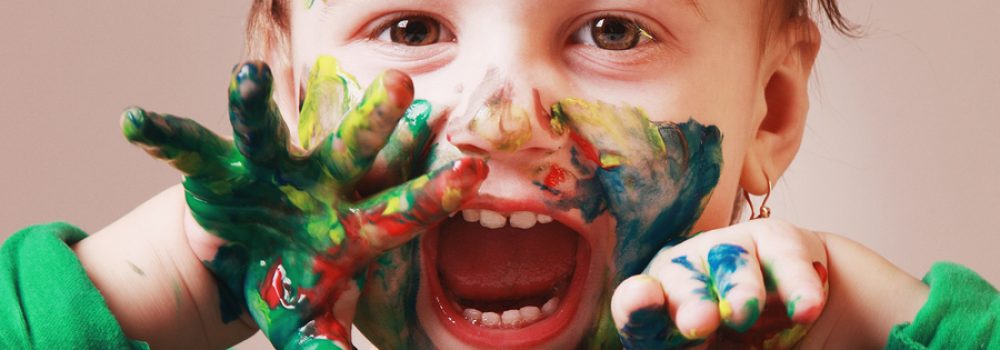Process vs. Product Art – Do You Really Know the Difference?
Art. When you hear that word, what do you think of? Does a picture of the Mona Lisa come to mind? What about the sculpture of David by Michelangelo? Because of the nature of art, each of us has our own idea of what it means to us on a personal level. For children, however, art is something they DO…it is a process.
Painting, drawing, sculpting are all processes used to create true art. If you give a group of children paint, will their paintings all look identical? Of course not! Art, in its truest form, is an expression of our feelings, ideas and emotions. Therefore, art is unique to the individual.
OK…so what exactly does this mean to you…an educator of children? Well, think about the types of art you plan for the children. Does the end result all look the same? If so…it is probably not art. In fact, a great way to test to see if your art activities are focusing more on the process and less on the product is to look at the end result. If a parent whispers to you, “What is it?” Then, guess what…it is process art!
Which also brings up an important point about art…never ask a child, “What is it?” They assume, because they put their heart and soul into it, that you already know. Instead say something like, “Tell me about your creation” or ask, “What do you like best about what you created?” This opens the door for them to share their ideas behind their art and is a wonderful way of building expressive language skills.
So…does this mean that you can’t ever do a “craft” project where the outcomes all look similar? Well, of course not. It just means that these types of activities should have a different purpose. Putting together a craft project involves both following directions and utilizing fine motor skills…both important skills. Just make sure if you are going to do this type of activity that you ask yourself questions such as these:
1) What skills do I want to reinforce through this activity and is there another more open-ended way I could achieve this goal? (e.g., cutting, using glue correctly, following directions, etc.)
2) How will children feel if, in the end, their craft does not “turn out right?” If the answer to that question is a negative, then the craft is probably not a good idea.
3) Will the children be able to do this activity on their own or will I end up doing it for them?
4) Am I doing this craft because the kids want to or because I want to OR because parents want me to?
As a provider, part of your job is to also educate parents/caregivers about the importance of process art. You can do this by highlighting the children’s work. Displaying process art is a great way for children to feel proud and for parents/caregivers to see their creations. Post children’s work on their cubbies or a bulletin board and add captions on index cards near their creations. On the cards, include information that explains what the art activity involved and the process the child went through to produce it. A photo of the child creating the art is also a wonderful thing to add. After all, a picture is worth a thousand words!
Art is beautiful. Art is unique and special. Make sure the art activities you plan for the children invite them to be free to express their ideas, thoughts and emotions in any way they desire!
 Special Limited Time Offer - Click Here to Get Your First Month of GeeWhiz for $5!
Special Limited Time Offer - Click Here to Get Your First Month of GeeWhiz for $5!




